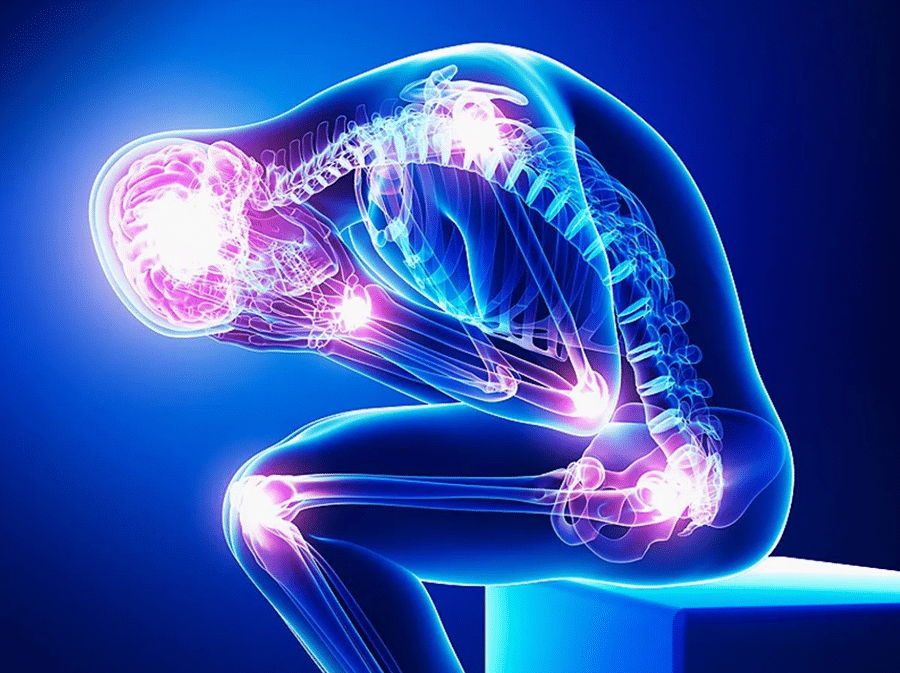Technically when you make dietary changes or push yourself to workout harder to lose weight, your body first loses excessive fat, whereas your muscle mass remains intact. But in some cases, while you are trying to lose weight, your body may start losing muscle mass instead of body fat. The condition is medically known as muscle atrophy, and it can be pretty unhealthy for your overall fitness.
Your body may start losing muscle mass when your diet does not include enough protein, or you may not give your body enough time to unwind. Moreover, the condition is more common among individuals over the age of 60, especially those who haven’t incorporated physical activity in their daily schedules for quite some time. But you don’t lose muscle mass all of a sudden; your body shows a few signs of muscle loss that you need to be aware of so you can take necessary measures to improve the condition and your overall well-being.
Here are four signs that indicate that you may be losing muscle mass instead of body fat.
Contents
Working Out Feels Excessively Strenuous

Your workout may be challenging, but if you suddenly feel your workout is excessively strenuous to a point where you are unable to do it all together, it could be a possible sign that you may be losing muscle mass. When you are losing muscle mass, your body also loses muscle strength, making it difficult to perform everyday tasks, including workouts. You may be unable to do the same number of repetitions or are unable to lift the same weight. Moreover, it is also likely that your body may feel so weak that you may prefer to skip the workout altogether.
Your Energy Levels Are Down All Day

Apart from missing out on workout sessions, it is likely that when your body loses muscle mass, you may feel sluggish and tired all day. In some cases where the loss of muscle mass is excessive, you may find it difficult to perform everyday tasks such as climbing up the stairs or even walking down the aisles.
The Fat Percentage In Your Body Is Not Changing

When you are trying to lose weight by making dietary changes, you may find that the number on the scale may be changing, but the fat percentage in your body isn’t changing. When you notice a change in your waist circumference, you can assess this, but the fat around your waistline (that you can check by pinching) remains the same.
You Are Losing Weight Too Quickly

Another common sign that your body is losing muscle mass instead of body fat is a drastic change in your weight. While you might get happy to see the numbers on the scale reducing too quickly, note that a healthy weight loss should be around one to two pounds a week. If you are losing quickly and effortlessly, it could indicate that your body is losing muscle mass.
A Word Of Caution

Losing muscle mass instead of fat can be dangerous as it can quickly turn into a vicious cycle where you lose muscle mass and eventually end up losing muscle strength. In turn, doing everyday activities such as walking, lifting weight, and climbing stairs can become difficult.
When this happens, you may start avoiding any activity that may seem strenuous to your body. And when you prevent basic movements and activities, it leads to a further loss of muscle strength. Eventually, you end up losing more muscle mass.
So the key is to watch out for signs of muscle loss and consult your healthcare provider, who can prescribe you appropriate screening for diagnosing the cause of muscle loss.
Managing Loss Of Muscle Mass

Fortunately, you can manage the loss of muscle mass, and you can still live an active and healthy life following the loss of muscle mass.
Your healthcare provider may recommend a series of tests to diagnose the reason for the loss of muscle mass and identify the condition’s underlying cause. Your healthcare provider may prescribe a series of examinations and scans, including blood tests, MRI, nerve conduction tests, and electromyography. Your healthcare provider may recommend the following treatment plan for managing muscle atrophy based on your test results.
- Physical therapy
- Ultrasound therapy
- Dietary Changes
- Regular Exercise.
If an underlying healthcare condition is causing muscle loss, your healthcare provider may prescribe treatment for it.
Takeaway
Muscle loss is a condition that can affect people of all ages but is particularly common among older adults over the age of 60. It happens when your body starts losing muscle first instead of fat. Some of the most common signs of muscle loss include
- Rapid weight loss,
- Feeling of lethargy and sluggishness throughout the day,
- Inability to progress with workout,
- Inability to workout altogether because it appears too harsh for you,
- Unchanged fat percentage in your body weight.
Loss of muscle mass can be dangerous as it can quickly turn into a vicious cycle where you lose muscle mass and lose muscle strength, making everyday tasks more challenging. Fortunately, there are ways to manage the condition. As soon as you identify any signs of muscle loss, make sure to consult your healthcare provider. Your healthcare practitioner may suggest measures such as regular exercise and improved nutrition, and getting treatment for the underlying condition that may be causing loss of muscle mass.


